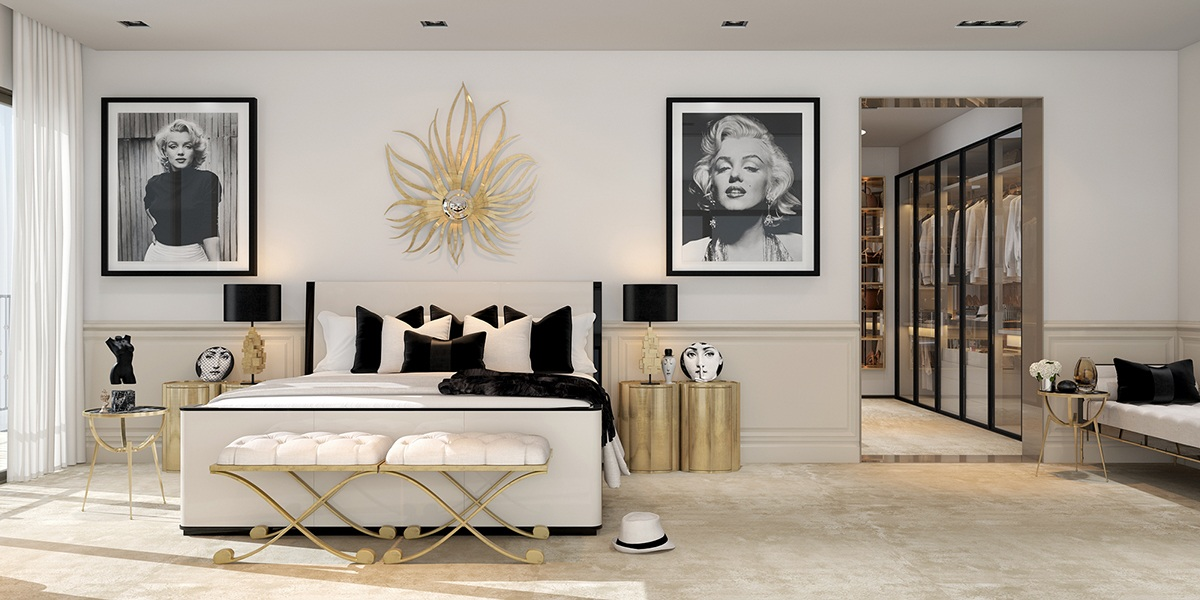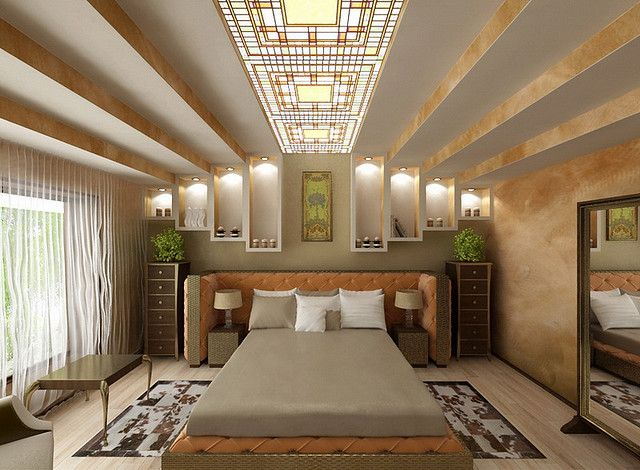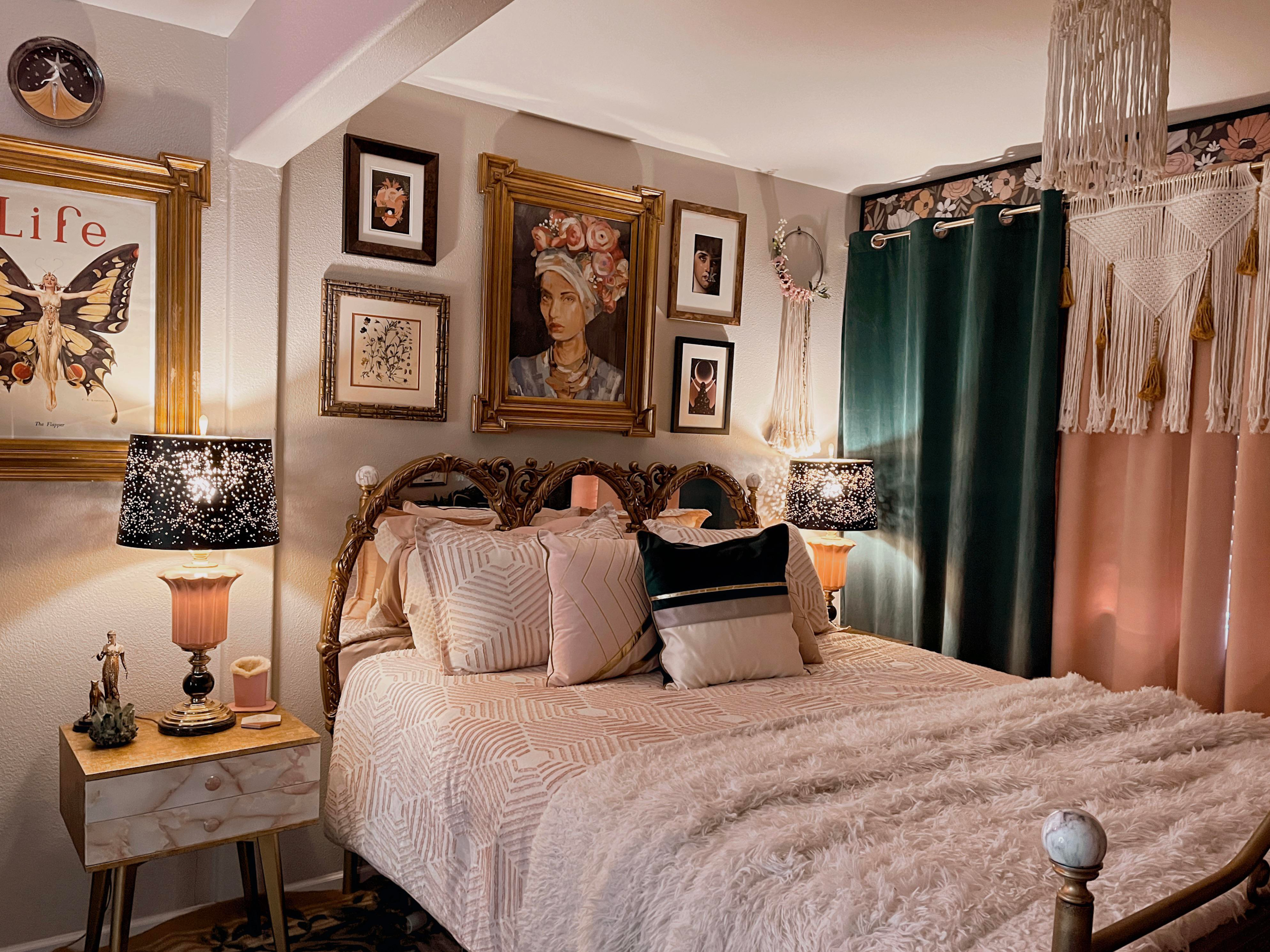Are you a fan of the luxurious and glamorous style of Art Deco?
Do you struggle to find the words to describe this unique and iconic design movement?
If so, you're not alone.
Many people are captivated by the bold, geometric patterns and lavish materials that define Art Deco but find it challenging to express its essence accurately. This design style, popular in the 1920s and 1930s, represents luxury, technology, and modernity.
A perfect embodiment of Art Deco design is a Luxurious Bed Frame. This piece of furniture (with its symmetrical designs and high-end materials) epitomizes the elegance and glamour of the Art Deco era.
In this guide, we'll delve deeper into how to describe Deco effectively, allowing you to articulate your admiration for this timeless style confidently. So, let's start!
The Origins of Art Deco

Art Deco is a design style that began in Paris in the early 20th century and was a significant shift in design. It was prominent from after World War I until World War II. The term 'Art Deco' comes from a 1925 Paris exhibition, symbolising a unique era in design history. It combines styles like Cubism and Futurism and is known for geometric shapes and bold colours. This style embraced technology and progress, mirroring the optimism of the interwar period.
Moreover, Art Deco furniture was innovative, with modern, sleek aesthetics and materials like chrome and mirrored glass.
Despite its functional aspect, Art Deco also embodied glamour and luxury, as seen in the intricate detailing and superior craftsmanship. Today, this timeless style still influences interior design.
Defining Characteristics of Art Deco
Art Deco, a vibrant style known for its shapes and bold colours, contrasts the organic Art Nouveau style. Art Deco's characteristics are symmetry, streamlined designs, and strong lines.
In furniture decor, the traditional Art Deco style employs bold geometric forms that lend a sense of unity and sophistication to the space.
Furthermore, this timeless style represents an era of optimism and progress. It is reflected in sleek, linear structures with stylised ornamentation.
Art Deco in Architecture

Deco is a popular architectural style known for its bold shapes and rich decoration. It emerged in the 1920s, blending functionality with aesthetics. The Art Deco movement was a significant departure from the whimsical nature of Art Nouveau, favouring instead a more streamlined and modern aesthetic.
This style influenced architecture and decorative arts like furniture design, textiles, and ceramics.
Moreover, Deco introduced luxury materials, bold patterns, and vivid colours in bedroom designs, creating a sophisticated atmosphere. These days, iconic Art Deco buildings also reflect this influential design period.
After that, art Deco artists and designers pushed the boundaries of creativity as a response to the industrial revolution.
Art Deco in Product Design
In product design, Art Deco is known for its functionality and sleek aesthetics. The style became popular in products such as cars, radios, household appliances, and even fashion.
The use of modern materials like chrome, Bakelite, and plastic was prevalent in Art Deco product design. This aesthetic also extended to typography with the introduction of bold sans-serif fonts.
Art Deco was also a prominent design style in the bedroom. Bold patterns, luxurious materials, and a sleek and modern aesthetic characterise the Art Deco Bedroom Style.
How to Recognize Art Deco?

Here are a few tips to help you recognize and appreciate this unique style:
-
Geometric Shapes and Symmetry: The Art Deco movement was heavily influenced by the shapes and Symmetry seen in Cubism. Look for furniture pieces with clean, straight lines, zigzags, chevrons, and geometric patterns.
-
Bold Colours and Contrasts: Art Deco designers favour bold, contrasting colours. Typically, you'll see a mix of neutral tones like black, white, and silver paired with vibrant hues like red, gold, green, or cobalt blue.
-
Luxurious Materials: Art Deco structures often feature luxurious materials like chrome, glass, shiny fabrics, mirrors and glossy wood finishes. In bedrooms, you might find mirrored vanities or chrome bed frames.
-
Lavish Ornamentation: Art Deco style is not shy about decorative art. So, look for intricate detailing, inlaid wood, and extravagant embellishments.
-
Influence of Technology and Progress: The Deco period was a time of rapid technological advancement reflected in the design. You'll find elements like streamlined shapes and sleek surfaces inspired by the efficiency and modernity of machines.
-
Art Deco Artworks and Art Deco Painting: Art Deco aesthetic can also be seen in the paintings and artworks of the era. These works often feature the same shapes, bold colours, and stylised forms seen in Art Deco architecture and furniture.
Art Deco vs. Other Art Styles
Deco, a visual arts style, is distinguished by its decorative arts influences and bold shapes, drawing from diverse global influences and modern aesthetics. This contrasts with classical Greek design's emphasis on simplicity, Symmetry, and proportionality, Bauhaus' focus on function over form and use of modern materials, and Gothic style's intricate details and verticality.
Overall, deco is recognised for its luxe aesthetics, embellished furniture, and bedroom design features. In contrast, Greek design leans towards simplicity, Bauhaus champions functionality, and Gothic style opts for intricate woodwork and rich colours.
The Legacy of Art Deco
Now you are fully versed in Art Deco, it’s time to explore its legacy and how it has influenced contemporary design. Art Deco is also renowned for its glamour; luxury profoundly influences contemporary design, especially furniture and bedroom decor.
Its distinct style is evident in the Art Deco Bed, which reflects the luxury and elegance of the era. This bed combines bold geometric shapes with high-quality materials by embodying the Deco ideals.
Recently, this style has been resurgent, with designers incorporating traditional Deco elements into modern Art Deco designs. This new style merges the boldness of original Deco works with contemporary life elements, resulting in a unique blend of the old and the new.
Final words
Now you've read everything, and we hope this guide has helped you know everything you need about Art Deco beds.
Let's take advantage of this chance; look at some of the available options right now.
You can choose your art deco bed from the Crafted Bed with different frames, including brass, wood, and metal.
So, why wait?
Start exploring and discover the perfect art deco bed for your bedroom from the Crafted Bed today!
 SALE! 10% OFF USE CODE: CRAFTED10
SALE! 10% OFF USE CODE: CRAFTED10






